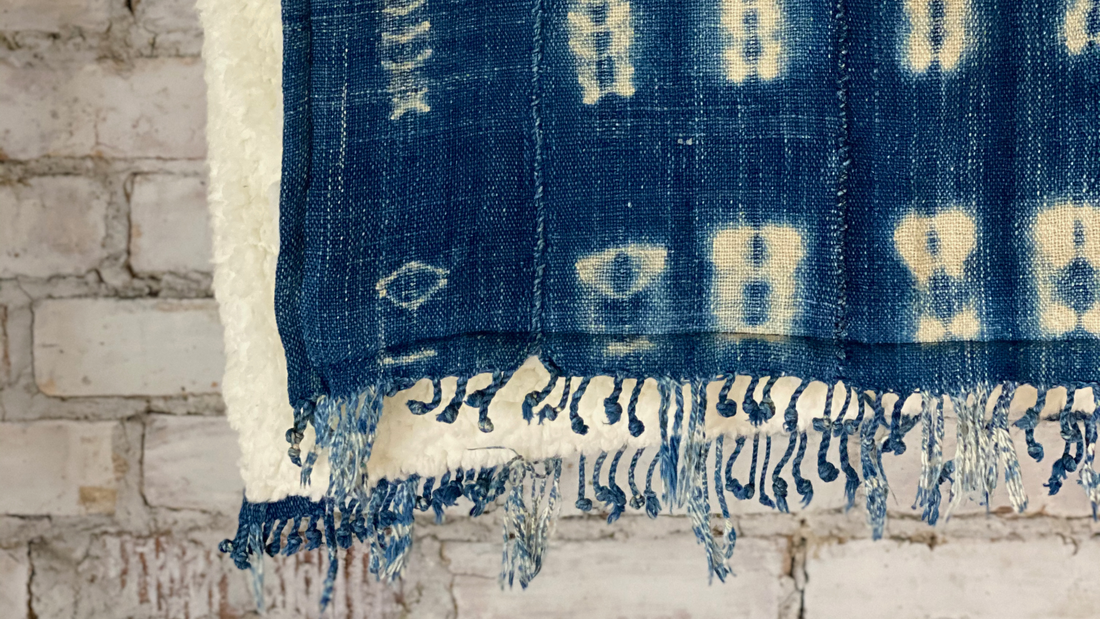
Beyond Blue. The Story Behind Our Hand Picked Indigo
Indigo textiles have been a shop favorite since we launched Everand® and it’s fair to say we have fallen hard for this rich, deep blue color. Our Indigo Shibori is made from actual vintage tapestries that have been given an indigo dye treatment and we’ve turned these beautiful textiles into pillows, throw blankets, storage and more. Since each piece is unique, you don’t know exactly what design or shade you’ll get, which is why we love the authentic nature of each finished product. Truly design perfection!
Here are the five things we love most about it:
- It connects back to female artisans. We’re female entrepreneurs who have put refugee women at the heart of our business. So we love that African Indigo originated with the women of West Africa. Their time honored technique of pinching and tying the un-dyed cloth creates an array of pattern and dye nuances that celebrate a true commitment to thoughtfully made artisan textiles.
- It is the world’s oldest dye. The name indigo comes from the Greek word “Indicon”, meaning from India, and quite literally where the color came from. Indigo dye dates back 5,000 years and was coveted by European traders visiting India (so special that it was compared in status to tea, silk and even gold!). In Africa, indigo is one of the most popular dyes and is symbolic of wealth and prosperity.
- Because it’s not easy being blue (for a plant). Natural indigo is a plant-based dye that comes from the tropical plant Indigofera. Unlike other plants whose natural colors mimic the dye color they produce, Indigofera is all green and does not have any blue in its leaves, flowers or stem. The dying process is very complex and can take up to a week to prepare. Dyers grind and soak the leaves, extract the liquid for oxidation, add a binding agent to the remaining sludge, and press it into small blocks to be dried.
- We love any version of tie dye. African ‘tie dye’ is known as adire oniko (meaning tied resist), referring to the process of tying a pattern onto the cloth prior to dyeing. The indigo cloths are made of narrow, woven cotton strips which are sewn together to make a whole cloth, then pinch and tied before soaking them in the indigo dye. The centuries-old technique requires incredible expertise - with some designs requiring thousands of ties prior to being dyed.
- Like your favorite pair of jeans, it goes with everything! Designer Amber Lewis shows us time and time again that nothing oozes laid back living better than indigo. We find the combinations endless; indigo and white are classic, mixing indigo and brown gives a relaxing, earthy vibe, and our favorite - mixing and matching indigo with every other shade of blue!
We love this glorious blue hue and the versatility of this color has made it an Everand® classic. Explore all of our Indigo Shibori goods for your home here.

